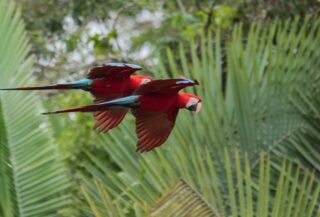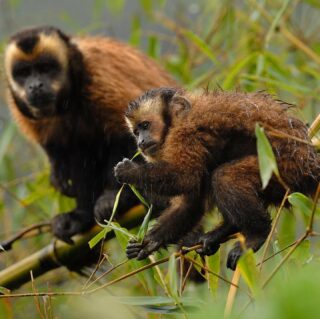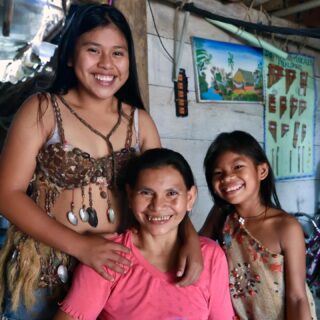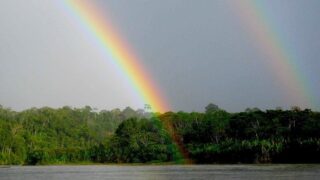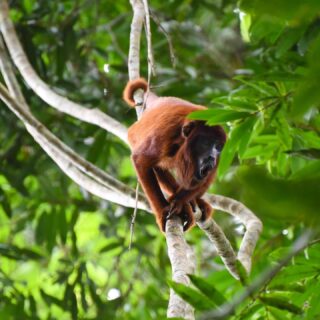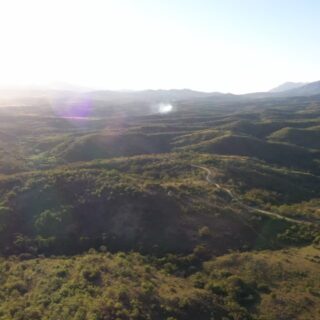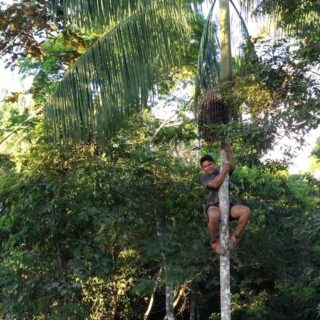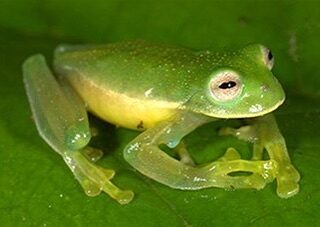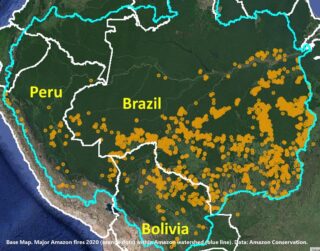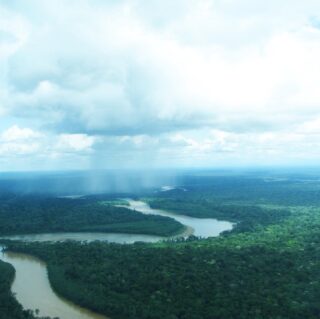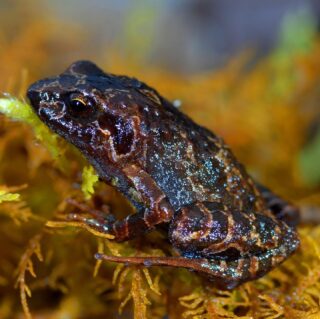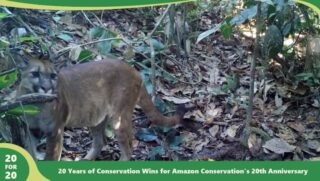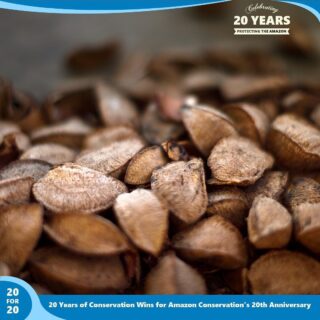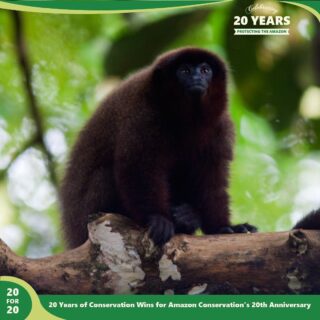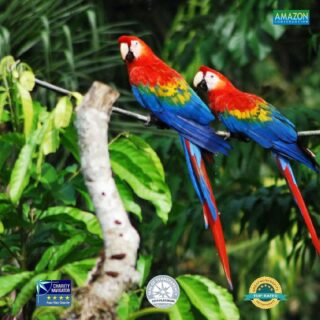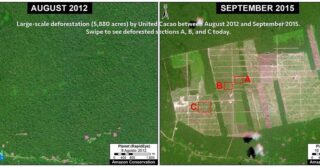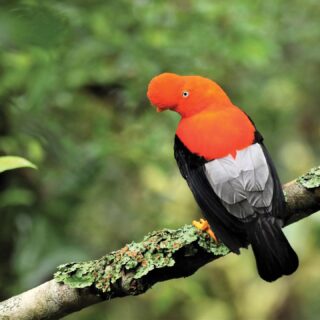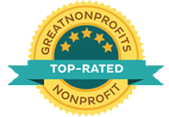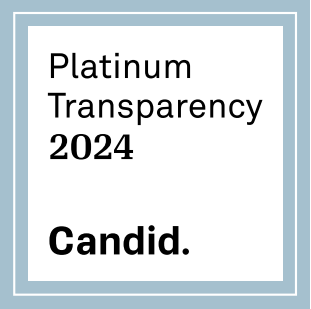Meet Our Partners Helping Us Combat Illegal Mining Across the Amazon
March 14, 2025
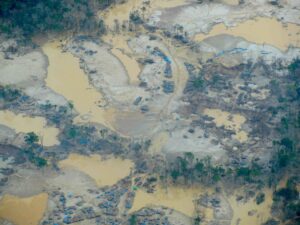
Last month, Amazon Conservation officially announced the commencement of a new project titled “Combating Illegal Mining Across the Amazon: Using Cutting-Edge Technology to Take More Effective Action.” The project utilizes a partner network across Amazonian countries to strengthen the capacities of civil society organizations, communities, and local governments to tackle illegal mining.
Over the past few years, our MAAP reports have shown increased mining activities. While several success stories have led to interventions of these (presumably illegal) activities, we have recognized that this widespread issue across the Amazon is urgently growing, as indigenous territories and protected areas face increasing threats. We acknowledge the importance of developing region-specific strategies to make on-the-ground conservation solutions effective. Considering this, we’re bringing together our network of partner civil society organizations in Bolivia, Brazil, Colombia, Ecuador, and Peru to carry out practical conservation solutions within their respective country contexts. Each partner has their own set of objectives and activities that will contribute to the project’s primary outcome, including but not limited to developing regional communication strategies and targeted advocacy campaigns, advancing legal mechanisms for policy reform, and strengthening civil society’s technical skills for monitoring, advocacy, and policy engagement.
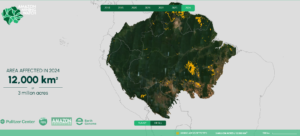 This new project plans to enhance the Amazon Mining Watch (AMW), an online dashboard providing real-time insights into mining activities, create annual MAAP reports identifying key hotspots, and produce high-resolution confidential reports to support urgent law enforcement actions. The AMW platform brings together machine learning and investigative reporting to shed light on large-scale environmental problems across the Amazon. By using innovative machine learning and providing groundbreaking quarterly updates on forest and river-based mining activities in key monitoring areas, this dashboard will automate work that is presently being carried out manually as part of our efforts to develop faster, cost-effective data delivery. The AMW will be integrated with a Mining Impacts Calculator, a tool to assess the social and environmental damage of illegal gold mining.
This new project plans to enhance the Amazon Mining Watch (AMW), an online dashboard providing real-time insights into mining activities, create annual MAAP reports identifying key hotspots, and produce high-resolution confidential reports to support urgent law enforcement actions. The AMW platform brings together machine learning and investigative reporting to shed light on large-scale environmental problems across the Amazon. By using innovative machine learning and providing groundbreaking quarterly updates on forest and river-based mining activities in key monitoring areas, this dashboard will automate work that is presently being carried out manually as part of our efforts to develop faster, cost-effective data delivery. The AMW will be integrated with a Mining Impacts Calculator, a tool to assess the social and environmental damage of illegal gold mining.
Furthermore, our robust partnership network will help initiate training among local organizations to improve their near real-time monitoring capabilities by leveraging tools to enhance data accessibility, support evidence-based policymaking, and foster coordinated regional responses to environmental and Indigenous threats from gold mining.
Learn about the partners we’re working with and how they’re combatting illegal mining:
 Earth Genome is a non-profit organization focused on making environmental data accessible and actionable to inform decision-making on climate and conservation issues. In 2022, via partnership with the Pulitzer Center’s Rainforest Investigations Network and Amazon Conservation, they launched Amazon Mining Watch (AMW), a digital platform that uses machine learning to report mining activities across the Amazon. This mining project will bring much-needed new features to the AMW platform, effectively turning it into a “one-stop shop” dashboard capable of producing quarterly updates and more accurate data of gold mining hotspots across the Amazon, along with improving user accessibility for our partners and other stakeholders in need of this key information on gold mining.
Earth Genome is a non-profit organization focused on making environmental data accessible and actionable to inform decision-making on climate and conservation issues. In 2022, via partnership with the Pulitzer Center’s Rainforest Investigations Network and Amazon Conservation, they launched Amazon Mining Watch (AMW), a digital platform that uses machine learning to report mining activities across the Amazon. This mining project will bring much-needed new features to the AMW platform, effectively turning it into a “one-stop shop” dashboard capable of producing quarterly updates and more accurate data of gold mining hotspots across the Amazon, along with improving user accessibility for our partners and other stakeholders in need of this key information on gold mining.
 Conservation Strategy Fund (CSF) is a leading conservation organization that has worked with local governments and civil society worldwide to build effective conservation strategies and advance solutions to environmental challenges. In 2021, CSF launched a unique digital Mining Impacts Calculator that can estimate illegal gold mining’s different social and economic impacts. This system will be integrated into the project dashboard, allowing for the calculation of the financial and social implications of newly detected gold mining.
Conservation Strategy Fund (CSF) is a leading conservation organization that has worked with local governments and civil society worldwide to build effective conservation strategies and advance solutions to environmental challenges. In 2021, CSF launched a unique digital Mining Impacts Calculator that can estimate illegal gold mining’s different social and economic impacts. This system will be integrated into the project dashboard, allowing for the calculation of the financial and social implications of newly detected gold mining.
 Our Peruvian sister organization, Conservación Amazónica-(ACCA), will disseminate MAAP reports and produce and share confidential reports with national and local authorities in Peru. With new information from the dashboard, they aim to strengthen the National Control and Monitoring System in Loreto, Ucayali, and Madre de Dios. With this project, Conservación Amazónica-ACCA expects to expand its network and outreach. Its activities include training other project partners and participating in international events to showcase the Peruvian experience and results.
Our Peruvian sister organization, Conservación Amazónica-(ACCA), will disseminate MAAP reports and produce and share confidential reports with national and local authorities in Peru. With new information from the dashboard, they aim to strengthen the National Control and Monitoring System in Loreto, Ucayali, and Madre de Dios. With this project, Conservación Amazónica-ACCA expects to expand its network and outreach. Its activities include training other project partners and participating in international events to showcase the Peruvian experience and results.
 Federación Nativa del Río Madre de Dios y Afluentes (FENAMAD) is a regional Indigenous federation representing 38 communities from the Madre de Dios region in Peru. We first began working with them in 2021 to bring them the technological tools and satellite imagery from our Monitoring of the Andes Amazon Program (MAAP) to support the legal action needed to protect their ancestral lands. As a strategic local Indigenous partner in Madre de Dios, FENAMAD will collaborate with Conservación Amazónica-ACCA to strengthen the local roundtable in the Tambopata municipality. With the capacities built to improve their monitoring skills (through prior training of their forest patrols via MAAP) and the dashboard-generated quality information, they expect to improve interactions with local and regional authorities that could lead to more effective on-the-ground operations to halt illegal mining.
Federación Nativa del Río Madre de Dios y Afluentes (FENAMAD) is a regional Indigenous federation representing 38 communities from the Madre de Dios region in Peru. We first began working with them in 2021 to bring them the technological tools and satellite imagery from our Monitoring of the Andes Amazon Program (MAAP) to support the legal action needed to protect their ancestral lands. As a strategic local Indigenous partner in Madre de Dios, FENAMAD will collaborate with Conservación Amazónica-ACCA to strengthen the local roundtable in the Tambopata municipality. With the capacities built to improve their monitoring skills (through prior training of their forest patrols via MAAP) and the dashboard-generated quality information, they expect to improve interactions with local and regional authorities that could lead to more effective on-the-ground operations to halt illegal mining.
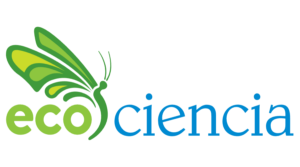 Fundación EcoCiencia is a science-based conservation organization based in Ecuador with whom we have collaborated with through our Monitoring of the Andes Amazon Program (MAAP) since 2021. One of EcoCiencia’s key objectives is to create a map analyzing the main areas in the Ecuadorian Amazon where MAAP monitoring and public report generation will expand thanks to the dashboard information that will be produced with this project: Cofan Bermejo, Punino, Yutzupino, Pueblo Shuar Arutam, Bosque Protector Cuenca Alta del Río Nangaritza and Podocarpus.
Fundación EcoCiencia is a science-based conservation organization based in Ecuador with whom we have collaborated with through our Monitoring of the Andes Amazon Program (MAAP) since 2021. One of EcoCiencia’s key objectives is to create a map analyzing the main areas in the Ecuadorian Amazon where MAAP monitoring and public report generation will expand thanks to the dashboard information that will be produced with this project: Cofan Bermejo, Punino, Yutzupino, Pueblo Shuar Arutam, Bosque Protector Cuenca Alta del Río Nangaritza and Podocarpus.
 Our Bolivian sister organization Conservación Amazónica-(ACEAA) is taking the sensitive context in Bolivia related to the interactions between civil society organizations and the government into consideration by utilizing the new project dashboard to improve deforestation monitoring and develop a comprehensive gold mining strategy in Bolivia, strengthening members of the Interinstitutional Working Group for Responsible Gold (GIT-OR) in the process. They also aim to participate in international events to learn from other experiences and expand their network and outreach.
Our Bolivian sister organization Conservación Amazónica-(ACEAA) is taking the sensitive context in Bolivia related to the interactions between civil society organizations and the government into consideration by utilizing the new project dashboard to improve deforestation monitoring and develop a comprehensive gold mining strategy in Bolivia, strengthening members of the Interinstitutional Working Group for Responsible Gold (GIT-OR) in the process. They also aim to participate in international events to learn from other experiences and expand their network and outreach.
 Fundación para la Conservación y el Desarrollo Sostenible (FCDS) is a Colombian conservation organization and another one of our MAAP partners whom we began working with in 2023. FCDS will disseminate MAAP reports in Colombia through the Observatory on Socio-Environmental Conflicts and other channels while using the dashboard to produce confidential reports for government agencies. FCDS will also produce one diagnostic focused on a triple border case and will contribute to the advocacy strategy to tackle illegal mining.
Fundación para la Conservación y el Desarrollo Sostenible (FCDS) is a Colombian conservation organization and another one of our MAAP partners whom we began working with in 2023. FCDS will disseminate MAAP reports in Colombia through the Observatory on Socio-Environmental Conflicts and other channels while using the dashboard to produce confidential reports for government agencies. FCDS will also produce one diagnostic focused on a triple border case and will contribute to the advocacy strategy to tackle illegal mining.
 Instituto Socioambiental (ISA) is a Brazilian conservation organization that works with Indigenous groups to help protect their territories and strengthen their livelihoods. ISA has been monitoring illegal mining in the Brazilian Amazon, specifically in protected areas and the Yanomami, Kayapó, and Munduruku Indigenous territories, and has helped them develop an early warning system within their communities. These efforts will be strengthened by dashboard-produced information and advocacy supported by data from CSF’s Mining Impacts Calculator.
Instituto Socioambiental (ISA) is a Brazilian conservation organization that works with Indigenous groups to help protect their territories and strengthen their livelihoods. ISA has been monitoring illegal mining in the Brazilian Amazon, specifically in protected areas and the Yanomami, Kayapó, and Munduruku Indigenous territories, and has helped them develop an early warning system within their communities. These efforts will be strengthened by dashboard-produced information and advocacy supported by data from CSF’s Mining Impacts Calculator.
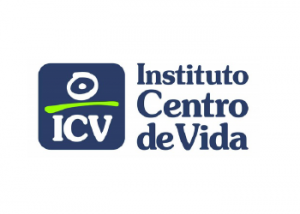 Instituto Centro de Vida (ICV) is a Brazilian environmental civil society organization that focuses on the restoration, conservation, and governance of forests in the Mato Grosso state. Given that illegal mining is spreading in protected areas and Indigenous reserves throughout Mato Grosso, this project provides ICV the opportunity to improve community monitoring, support effective government actions, and advocate against illegal mining with high-quality information while also filling gaps in the lack of detailed information determining the legality of mining activities and law enforcement.
Instituto Centro de Vida (ICV) is a Brazilian environmental civil society organization that focuses on the restoration, conservation, and governance of forests in the Mato Grosso state. Given that illegal mining is spreading in protected areas and Indigenous reserves throughout Mato Grosso, this project provides ICV the opportunity to improve community monitoring, support effective government actions, and advocate against illegal mining with high-quality information while also filling gaps in the lack of detailed information determining the legality of mining activities and law enforcement.

